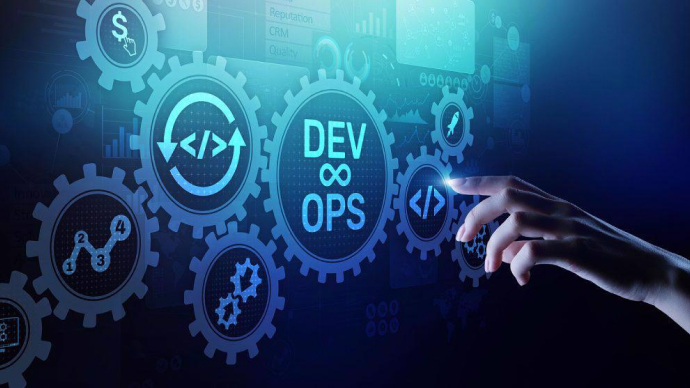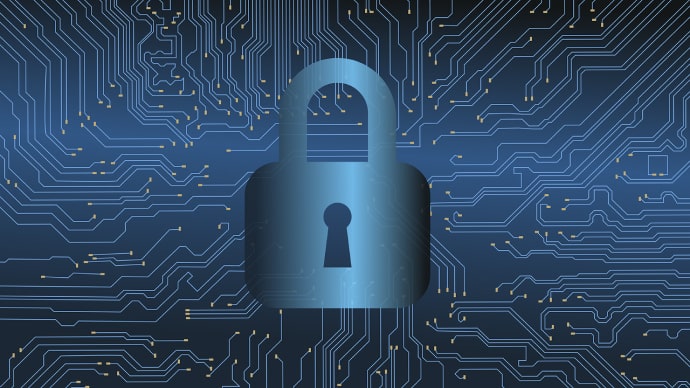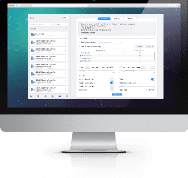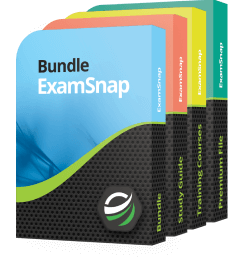
AWS Certified SysOps Administrator - Associate: AWS Certified SysOps Administrator - Associate (SOA-C02)
PDFs and exam guides are not so efficient, right? Prepare for your Amazon examination with our training course. The AWS Certified SysOps Administrator - Associate course contains a complete batch of videos that will provide you with profound and thorough knowledge related to Amazon certification exam. Pass the Amazon AWS Certified SysOps Administrator - Associate test with flying colors.

Curriculum for AWS Certified SysOps Administrator - Associate Certification Video Course
| Name of Video | Time |
|---|---|
 1. SOA-C02 Course Presentation - DO NOT SKIP |
4:00 |
| Name of Video | Time |
|---|---|
 1. Launching an EC2 Instance |
2:00 |
 2. Changing EC2 Instance Type |
4:00 |
 3. Enhanced Networking |
4:00 |
![Play Video: [SAA] EC2 Placement Groups](/design/img/playBtn.png) 4. [SAA] EC2 Placement Groups |
6:00 |
![Play Video: [SAA] EC2 Placement Groups - Hands On](/design/img/playBtn.png) 5. [SAA] EC2 Placement Groups - Hands On |
2:00 |
 6. EC2 Shutdown Behavior & Termination Protection |
4:00 |
 7. Troubleshooting EC2 Launch Issues |
4:00 |
 8. Troubleshooting EC2 SSH Issues |
7:00 |
![Play Video: [CCP/SAA/DVA] EC2 Instances Launch Types](/design/img/playBtn.png) 9. [CCP/SAA/DVA] EC2 Instances Launch Types |
10:00 |
![Play Video: [SAA] Spot Instances & Spot Fleet](/design/img/playBtn.png) 10. [SAA] Spot Instances & Spot Fleet |
10:00 |
![Play Video: [SAA] EC2 Instances Launch Types Hands On](/design/img/playBtn.png) 11. [SAA] EC2 Instances Launch Types Hands On |
7:00 |
 12. EC2 Instance Types Deep Dive |
5:00 |
 13. Burstable Instances |
6:00 |
 14. Elastic IPs |
6:00 |
 15. CloudWatch Metrics for EC2 |
5:00 |
 16. CloudWatch - Unified CloudWatch Agent - Overview |
3:00 |
 17. CloudWatch - Unified CloudWatch Agent Part I |
10:00 |
 18. CloudWatch - Unified CloudWatch Agent Part II |
6:00 |
 19. EC2 Instance Status Checks |
4:00 |
 20. EC2 Instance Status Checks Hands On |
6:00 |
![Play Video: [SAA] EC2 Hibernate Overview](/design/img/playBtn.png) 21. [SAA] EC2 Hibernate Overview |
4:00 |
![Play Video: [SAA] EC2 Hibernate Hands On](/design/img/playBtn.png) 22. [SAA] EC2 Hibernate Hands On |
4:00 |
 23. EC2 Cleanup |
1:00 |
| Name of Video | Time |
|---|---|
![Play Video: [CCP/SAA/DVA] AMI Overview](/design/img/playBtn.png) 1. [CCP/SAA/DVA] AMI Overview |
3:00 |
![Play Video: [CCP/SAA/DVA] AMI Hands On](/design/img/playBtn.png) 2. [CCP/SAA/DVA] AMI Hands On |
6:00 |
 3. AMI No Reboot Option |
3:00 |
 4. EC2 Instance Migration using AMIs |
4:00 |
![Play Video: [CCP] EC2 Image Builder](/design/img/playBtn.png) 5. [CCP] EC2 Image Builder |
3:00 |
![Play Video: [CCP] EC2 Image Builder Hands On](/design/img/playBtn.png) 6. [CCP] EC2 Image Builder Hands On |
12:00 |
 7. AMI In Production |
2:00 |
 8. AMI Section Cleanup |
1:00 |
| Name of Video | Time |
|---|---|
 1. Section Introduction |
1:00 |
 2. Systems Manager Overview |
4:00 |
 3. Start EC2 Instances with SSM Agent |
3:00 |
 4. AWS Tags & SSM Resource Groups |
4:00 |
 5. SSM Documents & SSM Run Command |
12:00 |
 6. SSM Automations |
7:00 |
![Play Video: [SAA/DVA] SSM Parameter Store Overview](/design/img/playBtn.png) 7. [SAA/DVA] SSM Parameter Store Overview |
4:00 |
![Play Video: [SAA/DVA] SSM Parameter Store Hands On (CLI)](/design/img/playBtn.png) 8. [SAA/DVA] SSM Parameter Store Hands On (CLI) |
7:00 |
 9. SSM Inventory & State Manager |
8:00 |
 10. SSM Patch Manager and Maintenance Windows |
4:00 |
 11. SSM Patch Manager and Maintenance Windows - Hands On |
4:00 |
 12. SSM Session Manager Overview |
3:00 |
 13. SSM Session Manager Hands On |
2:00 |
 14. SSM Cleanup |
1:00 |
 15. AWS OpsWorks Overview |
2:00 |
| Name of Video | Time |
|---|---|
![Play Video: [SAA/DVA] What is High Availability and Scalability ?](/design/img/playBtn.png) 1. [SAA/DVA] What is High Availability and Scalability ? |
5:00 |
![Play Video: [SAA/DVA] Elastic Load Balancing (ELB) Overview](/design/img/playBtn.png) 2. [SAA/DVA] Elastic Load Balancing (ELB) Overview |
7:00 |
![Play Video: [SAA/DVA] Classic Load Balancer (CLB)](/design/img/playBtn.png) 3. [SAA/DVA] Classic Load Balancer (CLB) |
1:00 |
![Play Video: [SAA/DVA] Classic Load Balancer (CLB) - Hands On](/design/img/playBtn.png) 4. [SAA/DVA] Classic Load Balancer (CLB) - Hands On |
10:00 |
![Play Video: [SAA/DVA] Application Load Balancer (ALB)](/design/img/playBtn.png) 5. [SAA/DVA] Application Load Balancer (ALB) |
6:00 |
![Play Video: [SAA/DVA] Application Load Balancer (ALB) - Hands On](/design/img/playBtn.png) 6. [SAA/DVA] Application Load Balancer (ALB) - Hands On |
6:00 |
![Play Video: [SAA/DVA] Network Load Balancer (NLB)](/design/img/playBtn.png) 7. [SAA/DVA] Network Load Balancer (NLB) |
2:00 |
![Play Video: [SAA/DVA] Network Load Balancer (NLB) - Hands On](/design/img/playBtn.png) 8. [SAA/DVA] Network Load Balancer (NLB) - Hands On |
5:00 |
![Play Video: [SAA/DVA] Elastic Load Balancer - Sticky Sessions](/design/img/playBtn.png) 9. [SAA/DVA] Elastic Load Balancer - Sticky Sessions |
6:00 |
![Play Video: [SAA/DVA] Elastic Load Balancer - Cross Zone Load Balancing](/design/img/playBtn.png) 10. [SAA/DVA] Elastic Load Balancer - Cross Zone Load Balancing |
5:00 |
![Play Video: [SAA/DVA] Elastic Load Balancer - SSL Certificates](/design/img/playBtn.png) 11. [SAA/DVA] Elastic Load Balancer - SSL Certificates |
8:00 |
![Play Video: [SAA/DVA] Elastic Load Balancer - Connection Draining](/design/img/playBtn.png) 12. [SAA/DVA] Elastic Load Balancer - Connection Draining |
2:00 |
 13. Elastic Load Balancer - Health Checks |
4:00 |
 14. Elastic Load Balancer - Monitoring, Troubleshooting, Logging and Tracing |
5:00 |
 15. Target Group Attributes |
5:00 |
 16. ALB Rules - Deep Dive |
3:00 |
![Play Video: [SAA/DVA] Auto Scaling Groups (ASG) Overview](/design/img/playBtn.png) 17. [SAA/DVA] Auto Scaling Groups (ASG) Overview |
8:00 |
![Play Video: [SAA/DVA] Auto Scaling Groups Hands On](/design/img/playBtn.png) 18. [SAA/DVA] Auto Scaling Groups Hands On |
9:00 |
![Play Video: [SAA/DVA] Auto Scaling Groups - Scaling Policies](/design/img/playBtn.png) 19. [SAA/DVA] Auto Scaling Groups - Scaling Policies |
5:00 |
![Play Video: [SAA/DVA] Auto Scaling Groups - Scaling Policies Hands On](/design/img/playBtn.png) 20. [SAA/DVA] Auto Scaling Groups - Scaling Policies Hands On |
9:00 |
 21. ASG for SysOps |
6:00 |
 22. CloudWatch for ASG |
1:00 |
 23. Auto Scaling Overview |
2:00 |
 24. Auto Scaling Hands On |
2:00 |
 25. Section Cleanup |
1:00 |
| Name of Video | Time |
|---|---|
 1. Beanstalk Overview |
4:00 |
![Play Video: [SAA/DVA] Beanstalk Overview](/design/img/playBtn.png) 2. [SAA/DVA] Beanstalk Overview |
5:00 |
![Play Video: [SAA] Beanstalk Hands On](/design/img/playBtn.png) 3. [SAA] Beanstalk Hands On |
5:00 |
| Name of Video | Time |
|---|---|
 1. CloudFormation Intro |
1:00 |
![Play Video: [DVA] CloudFormation Overview](/design/img/playBtn.png) 2. [DVA] CloudFormation Overview |
7:00 |
![Play Video: [DVA] CloudFormation Create Stack Hands On](/design/img/playBtn.png) 3. [DVA] CloudFormation Create Stack Hands On |
6:00 |
![Play Video: [DVA] CloudFormation Update and Delete Stack](/design/img/playBtn.png) 4. [DVA] CloudFormation Update and Delete Stack |
8:00 |
![Play Video: [DVA] YAML Crash Course](/design/img/playBtn.png) 5. [DVA] YAML Crash Course |
4:00 |
![Play Video: [DVA] CloudFormation Resources](/design/img/playBtn.png) 6. [DVA] CloudFormation Resources |
6:00 |
![Play Video: [DVA] CloudFormation Parameters](/design/img/playBtn.png) 7. [DVA] CloudFormation Parameters |
5:00 |
![Play Video: [DVA] CloudFormation Mappings](/design/img/playBtn.png) 8. [DVA] CloudFormation Mappings |
3:00 |
![Play Video: [DVA] CloudFormation Outputs](/design/img/playBtn.png) 9. [DVA] CloudFormation Outputs |
3:00 |
![Play Video: [DVA] CloudFormation Conditions](/design/img/playBtn.png) 10. [DVA] CloudFormation Conditions |
2:00 |
![Play Video: [DVA] CloudFormation Intrinsic Functions](/design/img/playBtn.png) 11. [DVA] CloudFormation Intrinsic Functions |
6:00 |
 12. CloudFormation User Data |
5:00 |
 13. CloudFormation cfn-init |
6:00 |
 14. CloudFormation cfn-signal and wait conditions |
6:00 |
 15. CloudFormation cfn-signal failures troubleshooting |
4:00 |
![Play Video: [DVA] CloudFormation Rollbacks](/design/img/playBtn.png) 16. [DVA] CloudFormation Rollbacks |
6:00 |
 17. CloudFormation Nested Stacks |
6:00 |
 18. CloudFormation ChangeSets |
4:00 |
![Play Video: [DVA] CloudFormation Drift](/design/img/playBtn.png) 19. [DVA] CloudFormation Drift |
4:00 |
 20. CloudFormation DeletionPolicy |
5:00 |
 21. CloudFormation TerminationProtection |
1:00 |
 22. ASG - CloudFormation CreationPolicy |
4:00 |
 23. ASG - CloudFormation UpdatePolicy |
10:00 |
 24. CloudFormation - DependsOn |
3:00 |
 25. CloudFormation - Stack Policies |
6:00 |
 26. Multi Region - CloudFormation StackSets (from DOP) |
11:00 |
 27. Continue Rolling Back an Update |
9:00 |
| Name of Video | Time |
|---|---|
![Play Video: [CCP/SAA/DVA] EBS Overview](/design/img/playBtn.png) 1. [CCP/SAA/DVA] EBS Overview |
5:00 |
![Play Video: [CCP/SAA/DVA] EBS Hands On](/design/img/playBtn.png) 2. [CCP/SAA/DVA] EBS Hands On |
5:00 |
![Play Video: [CCP/SAA/DVA] EC2 Instance Store](/design/img/playBtn.png) 3. [CCP/SAA/DVA] EC2 Instance Store |
3:00 |
![Play Video: [SAA/DVA] EBS Volume Types Deep Dive](/design/img/playBtn.png) 4. [SAA/DVA] EBS Volume Types Deep Dive |
6:00 |
![Play Video: [SAA] EBS Multi Attach](/design/img/playBtn.png) 5. [SAA] EBS Multi Attach |
1:00 |
 6. EBS Operation: Volume Resizing |
6:00 |
 7. EBS Operation: Snapshots |
4:00 |
 8. EBS Operation: Snapshots Hands On |
4:00 |
 9. EBS Operation: Volume Migration |
1:00 |
![Play Video: [SAA] EBS Operation: Volume Encryption](/design/img/playBtn.png) 10. [SAA] EBS Operation: Volume Encryption |
3:00 |
![Play Video: [SAA/DVA] EFS Overview](/design/img/playBtn.png) 11. [SAA/DVA] EFS Overview |
5:00 |
![Play Video: [SAA/DVA] EFS Hands On](/design/img/playBtn.png) 12. [SAA/DVA] EFS Hands On |
11:00 |
![Play Video: [SAA/DVA] EFS vs EBS](/design/img/playBtn.png) 13. [SAA/DVA] EFS vs EBS |
3:00 |
 14. EFS Access Points |
3:00 |
 15. EFS - Operations |
3:00 |
 16. EFS - CloudWatch Metrics |
2:00 |
 17. EFS - Section Cleanup |
1:00 |
| Name of Video | Time |
|---|---|
![Play Video: [SAA/DVA] S3 Buckets and Objects](/design/img/playBtn.png) 1. [SAA/DVA] S3 Buckets and Objects |
3:00 |
![Play Video: [SAA/DVA] S3 Buckets and Objects - Hands On](/design/img/playBtn.png) 2. [SAA/DVA] S3 Buckets and Objects - Hands On |
6:00 |
![Play Video: [SAA/DVA] S3 Versioning](/design/img/playBtn.png) 3. [SAA/DVA] S3 Versioning |
1:00 |
![Play Video: [SAA/DVA] S3 Versioning - Hands On](/design/img/playBtn.png) 4. [SAA/DVA] S3 Versioning - Hands On |
5:00 |
![Play Video: [SAA/DVA] S3 Encryption](/design/img/playBtn.png) 5. [SAA/DVA] S3 Encryption |
8:00 |
![Play Video: [SAA/DVA] S3 Encryption - Hands On](/design/img/playBtn.png) 6. [SAA/DVA] S3 Encryption - Hands On |
6:00 |
![Play Video: [SAA/DVA] S3 Security & Bucket Policies](/design/img/playBtn.png) 7. [SAA/DVA] S3 Security & Bucket Policies |
5:00 |
![Play Video: [SAA/DVA] S3 Bucket Policies Hands On`](/design/img/playBtn.png) 8. [SAA/DVA] S3 Bucket Policies Hands On` |
8:00 |
![Play Video: [SAA/DVA] S3 Websites](/design/img/playBtn.png) 9. [SAA/DVA] S3 Websites |
5:00 |
![Play Video: [SAA/DVA] S3 CORS](/design/img/playBtn.png) 10. [SAA/DVA] S3 CORS |
5:00 |
![Play Video: [SAA/DVA] S3 CORS Hands On](/design/img/playBtn.png) 11. [SAA/DVA] S3 CORS Hands On |
8:00 |
![Play Video: [SAA/DVA] S3 Consistency Model](/design/img/playBtn.png) 12. [SAA/DVA] S3 Consistency Model |
1:00 |
| Name of Video | Time |
|---|---|
![Play Video: [SAA/DVA] S3 MFA Delete](/design/img/playBtn.png) 1. [SAA/DVA] S3 MFA Delete |
2:00 |
![Play Video: [SAA/DVA] S3 MFA Delete Hands On](/design/img/playBtn.png) 2. [SAA/DVA] S3 MFA Delete Hands On |
6:00 |
![Play Video: [SAA/DVA] S3 Default Encryption](/design/img/playBtn.png) 3. [SAA/DVA] S3 Default Encryption |
3:00 |
![Play Video: [SAA/DVA] S3 Access Logs](/design/img/playBtn.png) 4. [SAA/DVA] S3 Access Logs |
2:00 |
![Play Video: [SAA/DVA] S3 Access Logs - Hands On](/design/img/playBtn.png) 5. [SAA/DVA] S3 Access Logs - Hands On |
4:00 |
![Play Video: [SAA/DVA] S3 Replication (Cross Region and Same Region)](/design/img/playBtn.png) 6. [SAA/DVA] S3 Replication (Cross Region and Same Region) |
2:00 |
![Play Video: [SAA/DVA] S3 Replication - Hands On](/design/img/playBtn.png) 7. [SAA/DVA] S3 Replication - Hands On |
6:00 |
![Play Video: [SAA/DVA] S3 Pre-signed URLs](/design/img/playBtn.png) 8. [SAA/DVA] S3 Pre-signed URLs |
2:00 |
![Play Video: [SAA/DVA] S3 Pre-signed URLs - Hands On](/design/img/playBtn.png) 9. [SAA/DVA] S3 Pre-signed URLs - Hands On |
2:00 |
 10. S3 Inventory |
6:00 |
![Play Video: [SAA/DVA] S3 Storage Classes + Glacier](/design/img/playBtn.png) 11. [SAA/DVA] S3 Storage Classes + Glacier |
10:00 |
![Play Video: [SAA/DVA] S3 Storage Classes + Glacier - Hands On](/design/img/playBtn.png) 12. [SAA/DVA] S3 Storage Classes + Glacier - Hands On |
3:00 |
![Play Video: [SAA/DVA] S3 Lifecycle Rules](/design/img/playBtn.png) 13. [SAA/DVA] S3 Lifecycle Rules |
5:00 |
![Play Video: [SAA/DVA] S3 Lifecycle Rules - Hands On](/design/img/playBtn.png) 14. [SAA/DVA] S3 Lifecycle Rules - Hands On |
3:00 |
![Play Video: [SAA] S3 Analytics](/design/img/playBtn.png) 15. [SAA] S3 Analytics |
1:00 |
![Play Video: [SAA/DVA] S3 Performance](/design/img/playBtn.png) 16. [SAA/DVA] S3 Performance |
6:00 |
![Play Video: [SAA/DVA] S3 & Glacier Select](/design/img/playBtn.png) 17. [SAA/DVA] S3 & Glacier Select |
2:00 |
![Play Video: [SAA/DVA] S3 Event Notifications](/design/img/playBtn.png) 18. [SAA/DVA] S3 Event Notifications |
2:00 |
![Play Video: [SAA/DVA] S3 Event Notifications - Hands On](/design/img/playBtn.png) 19. [SAA/DVA] S3 Event Notifications - Hands On |
5:00 |
 20. S3 Analytics |
3:00 |
 21. S3 Glacier Overview |
5:00 |
 22. S3 Glacier - Hands On |
2:00 |
 23. Glacier Vault Lock - Hands On |
4:00 |
![Play Video: [SAA] Athena Overview](/design/img/playBtn.png) 24. [SAA] Athena Overview |
2:00 |
![Play Video: [SAA] Athena Hands On](/design/img/playBtn.png) 25. [SAA] Athena Hands On |
8:00 |
 26. S3 Access Points |
7:00 |
 27. S3 VPC Endpoints |
2:00 |
 28. S3 Bucket Policies Advanced |
3:00 |
 29. S3 Batch Operations |
1:00 |
 30. S3 Batch Operations Hands On |
12:00 |
 31. S3 Multi Part Upload Deep Dive |
2:00 |
| Name of Video | Time |
|---|---|
![Play Video: [CCP/SAA] AWS Snow Family Overview](/design/img/playBtn.png) 1. [CCP/SAA] AWS Snow Family Overview |
11:00 |
![Play Video: [CCP/SAA] AWS Snow Family Hands On](/design/img/playBtn.png) 2. [CCP/SAA] AWS Snow Family Hands On |
6:00 |
![Play Video: [SAA] Storage Gateway Overview](/design/img/playBtn.png) 3. [SAA] Storage Gateway Overview |
7:00 |
![Play Video: [SAA] Storage Gateway Hands On](/design/img/playBtn.png) 4. [SAA] Storage Gateway Hands On |
1:00 |
 5. Storage Gateway for SysOps |
3:00 |
![Play Video: [SAA] Amazon FSx - Overview](/design/img/playBtn.png) 6. [SAA] Amazon FSx - Overview |
5:00 |
![Play Video: [SAA] Amazon FSx - Hands On](/design/img/playBtn.png) 7. [SAA] Amazon FSx - Hands On |
4:00 |
 8. FSx for SysOps |
1:00 |
| Name of Video | Time |
|---|---|
![Play Video: [SAA/DVA] CloudFront Overview](/design/img/playBtn.png) 1. [SAA/DVA] CloudFront Overview |
9:00 |
![Play Video: [SAA/DVA] CloudFront with S3 - Hands On](/design/img/playBtn.png) 2. [SAA/DVA] CloudFront with S3 - Hands On |
10:00 |
 3. CloudFront Reports, Logs and Troubleshooting |
6:00 |
 4. CloudFront Caching - Deep Dive |
11:00 |
 5. CloudFront with ALB Sticky Sessions |
2:00 |
| Name of Video | Time |
|---|---|
![Play Video: [SAA/DVA] RDS Overview](/design/img/playBtn.png) 1. [SAA/DVA] RDS Overview |
5:00 |
![Play Video: [SAA/DVA] RDS Multi AZ vs Read Replicas](/design/img/playBtn.png) 2. [SAA/DVA] RDS Multi AZ vs Read Replicas |
7:00 |
![Play Video: [SAA/DVA] RDS Hands On](/design/img/playBtn.png) 3. [SAA/DVA] RDS Hands On |
10:00 |
 4. RDS Multi AZ – Failover Conditions |
1:00 |
![Play Video: [SAA/DVA] RDS Encryption + Security](/design/img/playBtn.png) 5. [SAA/DVA] RDS Encryption + Security |
7:00 |
 6. RDS Proxy |
7:00 |
 7. RDS Parameter Groups |
4:00 |
 8. RDS Backups and Snapshots |
4:00 |
 9. RDS Events and Logs |
5:00 |
 10. RDS & CloudWatch |
4:00 |
 11. RDS Performance Insights |
5:00 |
![Play Video: [SAA/DVA] Aurora Overview](/design/img/playBtn.png) 12. [SAA/DVA] Aurora Overview |
7:00 |
![Play Video: [SAA/DVA] Aurora Hands On](/design/img/playBtn.png) 13. [SAA/DVA] Aurora Hands On |
9:00 |
 14. Aurora Backups |
2:00 |
 15. Aurora for SysOps |
2:00 |
![Play Video: [SAA/DVA] ElastiCache Overview](/design/img/playBtn.png) 16. [SAA/DVA] ElastiCache Overview |
4:00 |
![Play Video: [SAA/DVA] ElastiCache Hands On](/design/img/playBtn.png) 17. [SAA/DVA] ElastiCache Hands On |
4:00 |
![Play Video: [DVA] ElastiCache Redis Cluster Modes](/design/img/playBtn.png) 18. [DVA] ElastiCache Redis Cluster Modes |
3:00 |
 19. ElastiCache Redis for SysOps |
4:00 |
 20. ElastiCache Memcached for SysOps |
3:00 |
| Name of Video | Time |
|---|---|
 1. CloudWatch Metrics |
3:00 |
 2. CloudWatch Custom Metrics |
4:00 |
 3. CloudWatch Dashboards |
4:00 |
 4. CloudWatch Logs |
4:00 |
 5. CloudWatch Logs Hands On |
5:00 |
 6. CloudWatch Alarms |
3:00 |
 7. CloudWatch Alarms Hands On |
5:00 |
 8. CloudWatch Events |
5:00 |
![Play Video: [DVA] EventBridge Overview](/design/img/playBtn.png) 9. [DVA] EventBridge Overview |
3:00 |
![Play Video: [DVA] EventBridge Hands On](/design/img/playBtn.png) 10. [DVA] EventBridge Hands On |
5:00 |
 11. Service Quotas Overview |
2:00 |
 12. Service Quotas Hands On |
3:00 |
![Play Video: [CCP/SAA/DVA] CloudTrail](/design/img/playBtn.png) 13. [CCP/SAA/DVA] CloudTrail |
6:00 |
![Play Video: [CCP/SAA/DVA] CloudTrail - Hands On](/design/img/playBtn.png) 14. [CCP/SAA/DVA] CloudTrail - Hands On |
11:00 |
 15. CloudTrail for SysOps |
3:00 |
![Play Video: [SAA] Config Overview](/design/img/playBtn.png) 16. [SAA] Config Overview |
5:00 |
![Play Video: [SAA] Config Hands On](/design/img/playBtn.png) 17. [SAA] Config Hands On |
10:00 |
![Play Video: [SAA] CloudWatch vs CloudTrail vs Config](/design/img/playBtn.png) 18. [SAA] CloudWatch vs CloudTrail vs Config |
2:00 |
| Name of Video | Time |
|---|---|
 1. Section Intro |
1:00 |
 2. AWS Status Health Dashboard |
1:00 |
 3. AWS Personal Health Dashboard |
6:00 |
![Play Video: [SAA] Organizations Overview](/design/img/playBtn.png) 4. [SAA] Organizations Overview |
9:00 |
![Play Video: [CCP/SAA] Organizations Hands-On](/design/img/playBtn.png) 5. [CCP/SAA] Organizations Hands-On |
10:00 |
 6. AWS Organizations for SysOps |
2:00 |
![Play Video: [CCP] AWS Control Tower Overview](/design/img/playBtn.png) 7. [CCP] AWS Control Tower Overview |
1:00 |
![Play Video: [CCP] AWS Control Tower Hands On](/design/img/playBtn.png) 8. [CCP] AWS Control Tower Hands On |
6:00 |
 9. AWS Service Catalog Overview |
4:00 |
 10. AWS Service Catalog Hands-On |
7:00 |
 11. AWS Billing Alarms |
3:00 |
![Play Video: [SAA] AWS Cost Explorer](/design/img/playBtn.png) 12. [SAA] AWS Cost Explorer |
2:00 |
 13. AWS Budgets |
6:00 |
 14. AWS Cost Allocation Tags & Cost & Usage Reports |
6:00 |
![Play Video: [CCP] AWS Compute Optimizer Overview](/design/img/playBtn.png) 15. [CCP] AWS Compute Optimizer Overview |
1:00 |
| Name of Video | Time |
|---|---|
![Play Video: [SAA] AWS DataSync](/design/img/playBtn.png) 1. [SAA] AWS DataSync |
3:00 |
![Play Video: [SAA] AWS Backup Overview](/design/img/playBtn.png) 2. [SAA] AWS Backup Overview |
2:00 |
![Play Video: [SAA] AWS Backup Hands On](/design/img/playBtn.png) 3. [SAA] AWS Backup Hands On |
4:00 |
| Name of Video | Time |
|---|---|
![Play Video: [CCP/SAA] Shared Responsibility Model](/design/img/playBtn.png) 1. [CCP/SAA] Shared Responsibility Model |
4:00 |
![Play Video: [CCP] DDoS, AWS Shield and AWS WAF](/design/img/playBtn.png) 2. [CCP] DDoS, AWS Shield and AWS WAF |
5:00 |
![Play Video: [CCP] Penetration testing on AWS](/design/img/playBtn.png) 3. [CCP] Penetration testing on AWS |
2:00 |
![Play Video: [SAA] Inspector Overview](/design/img/playBtn.png) 4. [SAA] Inspector Overview |
2:00 |
 5. Inspector Hands On |
6:00 |
 6. Logging in AWS |
3:00 |
![Play Video: [SAA] GuardDuty](/design/img/playBtn.png) 7. [SAA] GuardDuty |
2:00 |
![Play Video: [CCP/SAA] Trusted Advisor](/design/img/playBtn.png) 8. [CCP/SAA] Trusted Advisor |
5:00 |
![Play Video: [SAA/DVA] Encryption 101](/design/img/playBtn.png) 9. [SAA/DVA] Encryption 101 |
5:00 |
![Play Video: [SAA/DVA] KMS Overview](/design/img/playBtn.png) 10. [SAA/DVA] KMS Overview |
8:00 |
![Play Video: [SAA/DVA] KMS Hands On w/ CLI](/design/img/playBtn.png) 11. [SAA/DVA] KMS Hands On w/ CLI |
9:00 |
![Play Video: [SAA] KMS Key Rotation](/design/img/playBtn.png) 12. [SAA] KMS Key Rotation |
3:00 |
 13. KMS For SysOps |
3:00 |
![Play Video: [SAA] CloudHSM Overview](/design/img/playBtn.png) 14. [SAA] CloudHSM Overview |
4:00 |
![Play Video: [CCP] AWS Artifact Overview](/design/img/playBtn.png) 15. [CCP] AWS Artifact Overview |
2:00 |
![Play Video: [CCP] AWS Certificate Manager Overview (ACM)](/design/img/playBtn.png) 16. [CCP] AWS Certificate Manager Overview (ACM) |
1:00 |
![Play Video: [DVA] AWS Certificate Manager (ACM) Hands On](/design/img/playBtn.png) 17. [DVA] AWS Certificate Manager (ACM) Hands On |
6:00 |
![Play Video: [SAA/DVA] Secrets Manager Overview](/design/img/playBtn.png) 18. [SAA/DVA] Secrets Manager Overview |
1:00 |
![Play Video: [SAA/DVA] Secrets Manager Hands On](/design/img/playBtn.png) 19. [SAA/DVA] Secrets Manager Hands On |
6:00 |
![Play Video: [DVA] SSM Parameter Store vs Secrets Manager](/design/img/playBtn.png) 20. [DVA] SSM Parameter Store vs Secrets Manager |
2:00 |
| Name of Video | Time |
|---|---|
![Play Video: [CCP/SAA/DVA] IAM Security Tools](/design/img/playBtn.png) 1. [CCP/SAA/DVA] IAM Security Tools |
1:00 |
![Play Video: [CCP/SAA/DVA] IAM Security Tools Hands On](/design/img/playBtn.png) 2. [CCP/SAA/DVA] IAM Security Tools Hands On |
2:00 |
 3. IAM Access Analyzer |
4:00 |
 4. Identity Federation with SAML & Cognito |
10:00 |
![Play Video: [SAA] STS & Cross Account Access](/design/img/playBtn.png) 5. [SAA] STS & Cross Account Access |
4:00 |
![Play Video: [DVA] Cognito User Pools Overview](/design/img/playBtn.png) 6. [DVA] Cognito User Pools Overview |
3:00 |
![Play Video: [DVA] Cognito Identity Pools Overview](/design/img/playBtn.png) 7. [DVA] Cognito Identity Pools Overview |
7:00 |
![Play Video: [DVA] Cognito User Pools vs Cognito Identity Pools](/design/img/playBtn.png) 8. [DVA] Cognito User Pools vs Cognito Identity Pools |
2:00 |
![Play Video: [SAA] AWS Single Sign On (SSO) - Overview](/design/img/playBtn.png) 9. [SAA] AWS Single Sign On (SSO) - Overview |
4:00 |
![Play Video: [SAA] AWS Single Sign On (SSO) - Hands On](/design/img/playBtn.png) 10. [SAA] AWS Single Sign On (SSO) - Hands On |
2:00 |
| Name of Video | Time |
|---|---|
![Play Video: [SAA/DVA] What is a DNS?](/design/img/playBtn.png) 1. [SAA/DVA] What is a DNS? |
6:00 |
![Play Video: [SAA/DVA] Route 53 Overview](/design/img/playBtn.png) 2. [SAA/DVA] Route 53 Overview |
6:00 |
![Play Video: [SAA/DVA] Route 53 - Registering a Domain](/design/img/playBtn.png) 3. [SAA/DVA] Route 53 - Registering a Domain |
3:00 |
![Play Video: [SAA/DVA] Route 53 - Creating our first records](/design/img/playBtn.png) 4. [SAA/DVA] Route 53 - Creating our first records |
4:00 |
![Play Video: [SAA/DVA] Route 53 - EC2 Setup](/design/img/playBtn.png) 5. [SAA/DVA] Route 53 - EC2 Setup |
5:00 |
![Play Video: [SAA/DVA] Route 53 - TTL](/design/img/playBtn.png) 6. [SAA/DVA] Route 53 - TTL |
5:00 |
![Play Video: [SAA/DVA] CNAME vs Alias](/design/img/playBtn.png) 7. [SAA/DVA] CNAME vs Alias |
7:00 |
![Play Video: [SAA/DVA] Routing Policy - Simple](/design/img/playBtn.png) 8. [SAA/DVA] Routing Policy - Simple |
4:00 |
![Play Video: [SAA/DVA] Routing Policy - Weighted](/design/img/playBtn.png) 9. [SAA/DVA] Routing Policy - Weighted |
5:00 |
![Play Video: [SAA/DVA] Routing Policy - Latency](/design/img/playBtn.png) 10. [SAA/DVA] Routing Policy - Latency |
5:00 |
![Play Video: [SAA/DVA] Route 53 Health Checks](/design/img/playBtn.png) 11. [SAA/DVA] Route 53 Health Checks |
5:00 |
![Play Video: [SAA/DVA] Route 53 Health Checks - Hands On](/design/img/playBtn.png) 12. [SAA/DVA] Route 53 Health Checks - Hands On |
5:00 |
![Play Video: [SAA/DVA] Routing Policy - Failover](/design/img/playBtn.png) 13. [SAA/DVA] Routing Policy - Failover |
4:00 |
![Play Video: [SAA/DVA] Routing Policy - Geolocation](/design/img/playBtn.png) 14. [SAA/DVA] Routing Policy - Geolocation |
4:00 |
![Play Video: [SAA/DVA] Routing Policy - Geoproximity](/design/img/playBtn.png) 15. [SAA/DVA] Routing Policy - Geoproximity |
3:00 |
![Play Video: [SAA/DVA] Routing Policy - Traffic Flow & Geoproximity Hands On](/design/img/playBtn.png) 16. [SAA/DVA] Routing Policy - Traffic Flow & Geoproximity Hands On |
8:00 |
![Play Video: [SAA/DVA] Routing Policy - Multi Value](/design/img/playBtn.png) 17. [SAA/DVA] Routing Policy - Multi Value |
4:00 |
![Play Video: [SAA/DVA] 3rd Party Domains & Route 53](/design/img/playBtn.png) 18. [SAA/DVA] 3rd Party Domains & Route 53 |
2:00 |
 19. S3 Website with Route 53 |
5:00 |
![Play Video: [SAA/DVA] Route 53 - Section Cleanup](/design/img/playBtn.png) 20. [SAA/DVA] Route 53 - Section Cleanup |
1:00 |
| Name of Video | Time |
|---|---|
 1. Section Introduction |
1:00 |
![Play Video: [SAA] CIDR, Private vs Public IP](/design/img/playBtn.png) 2. [SAA] CIDR, Private vs Public IP |
7:00 |
![Play Video: [SAA] Default VPC Overview](/design/img/playBtn.png) 3. [SAA] Default VPC Overview |
5:00 |
![Play Video: [SAA] VPC Overview and Hands On](/design/img/playBtn.png) 4. [SAA] VPC Overview and Hands On |
4:00 |
![Play Video: [SAA] Subnet Overview and Hands On](/design/img/playBtn.png) 5. [SAA] Subnet Overview and Hands On |
6:00 |
![Play Video: [SAA] Internet Gateways & Route Tables](/design/img/playBtn.png) 6. [SAA] Internet Gateways & Route Tables |
8:00 |
![Play Video: [SAA] NAT Instances](/design/img/playBtn.png) 7. [SAA] NAT Instances |
12:00 |
![Play Video: [SAA] NAT Gateways](/design/img/playBtn.png) 8. [SAA] NAT Gateways |
8:00 |
![Play Video: [SAA] DNS Resolution Options & Route 53 Private Zones](/design/img/playBtn.png) 9. [SAA] DNS Resolution Options & Route 53 Private Zones |
4:00 |
![Play Video: [SAA] NACL & Security Groups](/design/img/playBtn.png) 10. [SAA] NACL & Security Groups |
14:00 |
![Play Video: [SAA] VPC Peering](/design/img/playBtn.png) 11. [SAA] VPC Peering |
8:00 |
![Play Video: [SAA] VPC Endpoints](/design/img/playBtn.png) 12. [SAA] VPC Endpoints |
8:00 |
![Play Video: [SAA] VPC Flow Logs + Athena](/design/img/playBtn.png) 13. [SAA] VPC Flow Logs + Athena |
12:00 |
 14. VPC Flow Logs Troubleshooting for NACL and SG |
1:00 |
![Play Video: [SAA] Bastion Hosts](/design/img/playBtn.png) 15. [SAA] Bastion Hosts |
2:00 |
![Play Video: [SAA] Site to Site VPN, Virtual Private Gateway & Customer Gateway](/design/img/playBtn.png) 16. [SAA] Site to Site VPN, Virtual Private Gateway & Customer Gateway |
5:00 |
![Play Video: [SAA] Direct Connect & Direct Connect Gateway](/design/img/playBtn.png) 17. [SAA] Direct Connect & Direct Connect Gateway |
7:00 |
![Play Video: [SAA] Egress Only Internet Gateway](/design/img/playBtn.png) 18. [SAA] Egress Only Internet Gateway |
3:00 |
![Play Video: [SAA] AWS PrivateLink - VPC Endpoint Services](/design/img/playBtn.png) 19. [SAA] AWS PrivateLink - VPC Endpoint Services |
5:00 |
| Name of Video | Time |
|---|---|
 1. Other Services Overview |
1:00 |
 2. Amazon ES + Kibana |
3:00 |
![Play Video: [CCP] X-Ray](/design/img/playBtn.png) 3. [CCP] X-Ray |
2:00 |
Amazon AWS Certified SysOps Administrator - Associate Exam Dumps, Practice Test Questions
100% Latest & Updated Amazon AWS Certified SysOps Administrator - Associate Practice Test Questions, Exam Dumps & Verified Answers!
30 Days Free Updates, Instant Download!
AWS Certified SysOps Administrator - Associate Premium Bundle

- Premium File: 424 Questions & Answers. Last update: Dec 9, 2025
- Training Course: 303 Video Lectures
- Study Guide: 805 Pages
- Latest Questions
- 100% Accurate Answers
- Fast Exam Updates
Amazon AWS Certified SysOps Administrator - Associate Training Course
Want verified and proven knowledge for AWS Certified SysOps Administrator - Associate (SOA-C02)? Believe it's easy when you have ExamSnap's AWS Certified SysOps Administrator - Associate (SOA-C02) certification video training course by your side which along with our Amazon AWS Certified SysOps Administrator - Associate Exam Dumps & Practice Test questions provide a complete solution to pass your exam Read More.
AWS Certified SysOps Administrator – Associate Exam Prep Course
Certificate Exam Preparatory Course
Course Overview
The AWS Certified SysOps Administrator - Associate course is structured to provide professionals with the knowledge and skills necessary to deploy, manage, and maintain systems on the AWS cloud platform. As organizations increasingly migrate their operations to the cloud, the demand for qualified professionals who can operate complex cloud environments efficiently continues to grow. This course provides a comprehensive approach to learning, combining theoretical foundations with practical, hands-on exercises to help learners gain confidence in managing cloud infrastructure. The curriculum emphasizes operational excellence, security, scalability, and performance optimization, giving participants the tools to address real-world challenges encountered in cloud environments.
Participants begin by exploring the core concepts of AWS services, including compute, storage, networking, and databases. The course guides learners through the design and deployment of highly available, fault-tolerant systems that can scale with fluctuating workloads. In addition to understanding architectural principles, students learn best practices for maintaining secure and compliant systems. The course also emphasizes monitoring and performance optimization, allowing participants to gain visibility into system health and make informed decisions regarding resource allocation. By combining practical exercises with scenario-based learning, the course ensures that participants are well-prepared to handle both routine operations and unexpected challenges in AWS environments.
Throughout the program, learners engage with a variety of AWS tools and services that support operational tasks. This includes configuration management, infrastructure automation, and orchestration tools, all of which help reduce manual intervention and increase efficiency. Emphasis is placed on real-world problem-solving skills, enabling participants to diagnose issues, implement corrective actions, and maintain continuous system operation. By the end of the course, participants will have a robust understanding of cloud operational practices and the ability to apply their knowledge in professional settings. The course prepares learners to not only achieve certification but also succeed in roles that require practical expertise in cloud system administration.
What You Will Learn From This Course
Deploy scalable, highly available systems using AWS best practices and core services.
Migrate on-premises applications to AWS leveraging services such as AWS Database Migration Service and AWS Server Migration Service.
Utilize infrastructure management tools like AWS CloudFormation and configuration automation with AWS OpsWorks to efficiently manage applications.
Configure and manage networking services including VPC, Route 53, and Elastic Load Balancing to ensure secure and reliable connectivity.
Monitor system performance and resource usage using CloudWatch, AWS Config, and other monitoring tools.
Implement security and compliance measures with Identity and Access Management, Key Management Service, and CloudTrail.
Automate operational tasks through AWS Systems Manager, Lambda functions, and other orchestration solutions.
Troubleshoot and resolve common operational issues to maintain system reliability.
Apply cost optimization strategies to reduce waste while maintaining system performance.
Plan and implement disaster recovery and high-availability strategies to ensure continuous service operation.
This course is structured to provide learners with a mix of theoretical understanding and practical experience. Each learning point addresses a critical competency required for cloud operations. Participants not only gain knowledge of AWS services but also learn how to apply operational best practices to real-world scenarios. Through practical labs, guided exercises, and scenario-based problem-solving, learners develop confidence in managing cloud resources effectively while optimizing performance, security, and cost.
Learning Objectives
The learning objectives of this course are focused on equipping learners with the ability to operate, monitor, and maintain AWS-based systems efficiently. By the end of the program, participants will be able to deploy applications that are highly available and fault-tolerant, manage system performance, implement security measures, and automate common operational tasks. The objectives also emphasize strategic decision-making to optimize system usage, ensure compliance, and maintain cost-effective operations.
Participants will understand how to leverage AWS services for monitoring, automation, and orchestration to reduce manual intervention and enhance operational efficiency. They will gain proficiency in configuring networking environments, securing cloud resources, and planning for disaster recovery. Another objective is to ensure learners can troubleshoot operational challenges effectively and implement solutions that prevent recurring issues. These objectives align with the requirements of the AWS Certified SysOps Administrator - Associate exam, preparing participants for both certification and professional practice.
Key objectives include:
Understanding core AWS services and their roles in deploying, managing, and monitoring systems.
Implementing highly available and fault-tolerant architectures to maintain service continuity.
Deploying and managing applications using AWS infrastructure management tools such as CloudFormation, Elastic Beanstalk, and OpsWorks.
Monitoring system performance, identifying bottlenecks, and implementing corrective measures using CloudWatch and AWS Config.
Configuring secure networking environments with VPCs, subnets, route tables, NAT gateways, and security groups.
Applying security best practices using IAM policies, encryption mechanisms, and compliance frameworks.
Automating operational tasks with AWS Lambda, Systems Manager, and other orchestration tools.
Troubleshooting operational issues and implementing mitigation strategies.
Planning and executing migrations of on-premises workloads to AWS with minimal disruption.
Implementing cost optimization and resource management strategies to improve efficiency.
By mastering these objectives, learners will gain practical skills that are immediately applicable in cloud operational roles, as well as the knowledge needed to successfully complete certification requirements.
Target Audience
This course is designed for IT professionals responsible for managing, operating, and optimizing cloud infrastructure on AWS. It is ideal for system administrators, DevOps engineers, cloud engineers, and other IT staff who need to maintain operational excellence in cloud environments. Participants who are seeking to validate their practical skills through certification and advance their careers in cloud operations will benefit significantly from this program.
System administrators transitioning from traditional on-premises environments will gain insights into how AWS services enhance operational efficiency, scalability, and reliability. DevOps engineers will learn to integrate operational best practices with automated deployment pipelines, continuous monitoring, and orchestration workflows. Cloud engineers who design, deploy, and manage AWS workloads will benefit from in-depth coverage of system monitoring, security practices, and operational troubleshooting.
Additionally, IT professionals looking to demonstrate their expertise and earn the AWS Certified SysOps Administrator - Associate credential will find the course invaluable. The curriculum provides structured guidance, real-world scenarios, and hands-on labs to ensure participants are prepared for both certification and professional application. Whether learners are new to AWS or seeking to enhance existing knowledge, this course offers a comprehensive path to operational proficiency in cloud management.
Course Description
The AWS Certified SysOps Administrator - Associate preparation course provides a structured program that combines conceptual knowledge with practical application. Participants learn to manage cloud systems effectively, covering topics such as deployment, system monitoring, automation, security, compliance, and networking. The curriculum emphasizes best practices for operational excellence, ensuring that learners can apply their skills in real-world AWS environments.
Hands-on exercises and scenario-based learning form a core component of the program. Learners engage with practical labs that simulate real operational challenges, including resource provisioning, performance optimization, and troubleshooting. The course covers AWS tools for automation, monitoring, and security, enabling participants to apply these tools effectively in day-to-day tasks. Emphasis is placed on critical problem-solving skills, allowing learners to address operational issues proactively and maintain system reliability.
The program also addresses cloud migration strategies, guiding participants through evaluating existing infrastructure, selecting appropriate AWS services, and planning transitions to the cloud. The course ensures that learners understand how to maintain application performance during migration and minimize downtime. By combining technical instruction with practical exercises, the course prepares participants to manage AWS workloads confidently while developing the skills required for certification and professional advancement.
Requirements
To participate successfully in this course, learners should have a minimum of one year of experience deploying, managing, or operating systems on AWS. Familiarity with core AWS services, including compute, storage, networking, and database solutions, is expected. Understanding basic security practices such as IAM policies, encryption mechanisms, and monitoring tools like CloudWatch and CloudTrail is also recommended.
A general knowledge of networking concepts, including TCP/IP, DNS, and VPNs, will help learners fully engage with the networking modules. Experience with scripting or programming in at least one language is beneficial, as automation and orchestration tasks are covered in depth. While prior experience with cloud migrations or infrastructure as code is not mandatory, familiarity with these concepts can enhance learning outcomes. Meeting these requirements ensures that learners are well-prepared to engage with the course material and acquire maximum value from the training.
Prerequisites
Before enrolling in the AWS Certified SysOps Administrator - Associate course, participants should have foundational knowledge of cloud computing and experience with basic system administration tasks. Familiarity with AWS services and global infrastructure provides context for operational practices covered in the course. Prior exposure to virtualization, server administration, and networking concepts is advantageous.
While not required, having previously earned certifications such as AWS Certified Solutions Architect - Associate or AWS Certified Developer - Associate can be helpful. These credentials indicate that participants already have a solid understanding of AWS services, allowing the course to focus on operational and advanced administration topics. Comfort with navigating the AWS Management Console and using command-line tools for managing resources is also recommended. These prerequisites ensure that learners can maximize their understanding of the course and apply operational strategies effectively in professional settings.
Course Modules/Sections
The AWS Certified SysOps Administrator - Associate course is structured into multiple modules, each designed to provide learners with a comprehensive understanding of cloud operations. The modules are sequentially organized to build foundational knowledge before advancing to more complex concepts. Each section combines theoretical learning with hands-on practice to reinforce understanding and ensure participants can apply knowledge in real-world scenarios.
The first module introduces cloud fundamentals and AWS architecture, helping learners understand the cloud ecosystem, including compute, storage, networking, and database services. This foundation allows participants to appreciate how various services interact and supports efficient system deployment. The second module focuses on deploying applications and managing resources within AWS. Participants learn how to provision EC2 instances, configure S3 storage, set up databases using RDS, and utilize Auto Scaling to ensure applications can handle fluctuating workloads.
Subsequent modules delve into monitoring, automation, and orchestration. Learners explore services such as CloudWatch, AWS Config, and Systems Manager, which enable continuous performance monitoring and operational efficiency. Security and compliance modules teach participants to implement Identity and Access Management policies, encryption strategies with AWS Key Management Service, and logging with CloudTrail to maintain secure cloud environments. The final modules cover migration strategies, troubleshooting common operational issues, and cost management practices to optimize resource usage. Each module is reinforced with labs, practical exercises, and scenario-based tasks to ensure participants gain applicable skills and confidence in managing AWS workloads.
Key Topics Covered
The course covers an extensive range of topics critical to mastering AWS operations and achieving certification readiness. One of the core topics is the deployment and management of scalable, highly available, and fault-tolerant systems. Participants learn how to configure EC2 instances, load balancers, and Auto Scaling groups to maintain performance and availability under varying load conditions. They also explore storage solutions, including S3, EBS, and Glacier, and learn how to implement data redundancy and backup strategies to safeguard critical information.
Networking is another essential topic. Participants gain hands-on experience with VPC configuration, subnets, route tables, security groups, and network access control lists. DNS management using Route 53, VPN setup, and peering connections are covered to ensure learners can maintain secure and efficient network architectures. Monitoring and performance optimization topics include CloudWatch metrics, custom alarms, automated responses, and resource optimization strategies. Learners develop skills to identify bottlenecks, optimize resource usage, and ensure consistent system performance.
Security and compliance form a significant portion of the curriculum. Participants learn to manage access through IAM roles and policies, implement encryption for data at rest and in transit, and configure auditing with CloudTrail. Automation and orchestration topics focus on using Systems Manager, Lambda, and CloudFormation to reduce manual operational tasks and enhance system reliability. Migration topics cover strategies for moving on-premises workloads to AWS, evaluating dependencies, minimizing downtime, and ensuring business continuity. Throughout the course, learners are exposed to troubleshooting techniques, cost management, and operational best practices that align with real-world scenarios and industry standards.
Teaching Methodology
The teaching methodology of the AWS Certified SysOps Administrator - Associate course combines interactive lectures, guided labs, and scenario-based learning to ensure comprehensive understanding. Each concept is introduced with clear explanations, followed by demonstrations of real-world applications. Hands-on labs allow participants to apply what they have learned immediately, reinforcing knowledge and developing practical skills. This approach ensures that learners are not only memorizing procedures but also understanding the reasoning behind operational practices and decision-making in cloud environments.
Scenario-based learning is integral to the methodology. Participants are presented with realistic operational challenges that require them to analyze, troubleshoot, and implement solutions. These scenarios range from system failures and performance bottlenecks to security incidents and cost optimization challenges. By simulating real-world conditions, learners gain confidence in their ability to handle operational tasks efficiently. Additionally, group discussions and collaborative exercises foster peer learning, allowing participants to exchange insights and problem-solving strategies.
The course also incorporates continuous assessment and feedback, helping learners identify areas that require further practice. Quizzes, hands-on exercises, and knowledge checks are used to reinforce learning and provide a clear understanding of each participant’s progress. The combination of instructional lectures, practical labs, and scenario-based exercises ensures that learners develop a holistic understanding of AWS operational practices. This methodology prepares participants not only for certification but also for effective system administration in professional environments.
Assessment & Evaluation
Assessment and evaluation are critical components of the AWS Certified SysOps Administrator - Associate course. Participants are evaluated through a combination of quizzes, hands-on exercises, practical labs, and scenario-based tasks to ensure they have acquired both theoretical knowledge and practical skills. Quizzes are designed to test comprehension of core concepts and key topics, providing immediate feedback to reinforce learning.
Hands-on labs are used extensively for evaluation, requiring participants to perform tasks such as provisioning resources, configuring networks, deploying applications, and implementing security measures. These practical exercises ensure learners can translate theoretical knowledge into actionable skills. Scenario-based tasks further assess problem-solving abilities by presenting real-world operational challenges. Participants must analyze issues, identify root causes, and implement appropriate solutions, demonstrating their readiness for actual operational responsibilities.
Progress is monitored throughout the course using continuous assessment methods, including knowledge checks and lab performance metrics. Instructors provide feedback on performance, highlighting areas of strength and identifying topics that require additional focus. This approach ensures that learners develop confidence in managing AWS workloads and are well-prepared to undertake the certification exam. By combining multiple assessment methods, the course ensures a thorough evaluation of participant capabilities, fostering both knowledge retention and practical expertise.
The evaluation framework also emphasizes best practices and industry standards, ensuring that learners understand not only how to perform operational tasks but also why these practices are important for security, reliability, and efficiency. Cost management and optimization are assessed through exercises that require participants to balance performance and expenditure, reflecting real-world scenarios where resource efficiency is critical. Troubleshooting skills are evaluated by presenting unexpected system behaviors, requiring learners to analyze logs, metrics, and configurations to restore optimal operation.
Through structured assessments, participants gain measurable insights into their progress and preparedness. Continuous feedback allows learners to refine their skills, ensuring that they are capable of handling complex operational challenges in AWS environments. The assessment and evaluation process ensures that participants achieve a high level of competency, equipping them with the knowledge, confidence, and practical skills needed to excel as cloud administrators.
The course is designed to accommodate a range of learning styles, with assessments that encourage both independent problem-solving and collaborative exercises. Group projects allow participants to simulate team-based operations, emphasizing communication, coordination, and strategic planning in cloud management. Individual tasks provide opportunities to demonstrate mastery of specific skills, ensuring that every participant meets the required competency levels. By integrating these diverse assessment methods, the program provides a comprehensive evaluation framework that reflects the real-world responsibilities of an AWS Certified SysOps Administrator - Associate.
Furthermore, assessments are aligned with the learning objectives and key course modules, ensuring a cohesive and goal-oriented evaluation process. Participants are assessed on their ability to deploy scalable systems, configure secure networking, monitor performance, automate operations, troubleshoot issues, and optimize resource usage. This alignment ensures that learners develop expertise across all critical operational areas and are fully prepared for professional responsibilities and certification requirements.
Benefits of the Course
The AWS Certified SysOps Administrator - Associate course provides a multitude of benefits for IT professionals seeking to strengthen their cloud operations expertise. One of the primary advantages is the ability to develop practical, hands-on skills that are directly applicable to managing AWS workloads. Participants gain experience configuring and deploying scalable systems, monitoring performance, automating operational tasks, and implementing security measures. This practical experience is critical for professionals who need to operate cloud environments efficiently and respond to operational challenges with confidence.
Another significant benefit is enhanced career opportunities. Cloud computing continues to grow rapidly, and organizations are actively seeking qualified professionals who can manage cloud infrastructures effectively. Completing this course and earning the associated certification demonstrates technical proficiency and a commitment to professional development, making candidates more competitive in the job market. The certification is widely recognized and respected within the IT industry, and it serves as a credential that validates a participant’s ability to handle operational responsibilities in AWS environments.
The course also benefits participants by providing structured guidance on best practices for cloud operations. Learners gain knowledge on designing highly available architectures, optimizing performance, managing security and compliance, and implementing cost-effective strategies. This knowledge allows participants to contribute strategically to their organizations, improving system reliability, security, and efficiency. Additionally, the course helps participants develop troubleshooting skills, enabling them to analyze system issues, identify root causes, and implement effective solutions. This capability is invaluable for maintaining uninterrupted operations and minimizing business disruptions.
Through hands-on labs and scenario-based exercises, participants also develop problem-solving and critical thinking abilities. These exercises simulate real-world operational challenges, requiring learners to apply their knowledge and skills in practical situations. By engaging with these scenarios, participants learn how to prioritize tasks, make informed decisions under pressure, and balance competing operational demands. These skills not only prepare learners for certification but also ensure they can perform effectively in professional environments, whether managing a small-scale deployment or overseeing complex enterprise systems.
Furthermore, the course emphasizes automation and orchestration, which are essential for improving operational efficiency. Participants learn to use tools such as AWS Systems Manager, Lambda, and CloudFormation to automate routine tasks, reducing the likelihood of human error and freeing time for strategic initiatives. This knowledge allows organizations to streamline operations, improve consistency, and scale processes effectively. Overall, the course equips learners with both practical expertise and strategic insights that enhance their ability to contribute meaningfully to organizational success while advancing their professional development.
Course Duration
The duration of the AWS Certified SysOps Administrator - Associate course is designed to accommodate comprehensive learning while allowing participants to progress at a practical pace. Typically, the course spans several weeks, with each module delivered through a combination of lectures, hands-on labs, and scenario-based exercises. This approach ensures that learners can absorb foundational concepts, practice skills, and apply knowledge in simulated operational environments before moving to more advanced topics.
Each module is carefully structured to focus on specific aspects of AWS operations. Initial modules, covering cloud fundamentals and core service architecture, usually require more time as participants familiarize themselves with essential concepts. Subsequent modules, such as monitoring, security, automation, and troubleshooting, build on this foundation and often involve practical exercises that take additional time to complete. By allocating sufficient duration to each module, the course ensures that participants gain a deep understanding of both theoretical concepts and real-world operational practices.
The pace of the course is flexible enough to accommodate professionals with varying levels of prior experience. Learners can spend additional time on challenging topics, repeat hands-on labs to reinforce skills, and engage with scenario-based exercises to test their problem-solving abilities. This flexibility is essential for ensuring that all participants, regardless of background, achieve competency in operational management on AWS. Additionally, the course duration allows for continuous assessment and feedback, providing opportunities for learners to identify areas for improvement and track their progress over time.
On average, the course may require several hours of study per week, with total learning time often ranging from four to eight weeks depending on participant engagement. This duration balances the need for comprehensive coverage of topics with the practical realities of learners’ professional commitments. By the end of the course, participants will have completed sufficient hands-on exercises and scenario-based tasks to feel confident in managing AWS workloads effectively. The structured duration ensures that learners are well-prepared for certification and ready to apply operational best practices in real-world cloud environments.
Tools & Resources Required
To successfully participate in the AWS Certified SysOps Administrator - Associate course, learners require access to specific tools and resources that support hands-on learning and practical exercises. A primary requirement is an active AWS account, which allows participants to create, manage, and monitor resources in a live cloud environment. Access to AWS services such as EC2, S3, RDS, CloudWatch, and Lambda is essential for completing labs and exercises that simulate real-world operational scenarios.
Participants should also have a reliable internet connection and a computer capable of running web browsers, terminal interfaces, and scripting environments. Many exercises involve using the AWS Management Console, command-line interface (CLI), and infrastructure as code tools such as CloudFormation. Familiarity with basic scripting or programming languages, such as Python, Bash, or PowerShell, is helpful for automation tasks and troubleshooting exercises. These skills allow participants to execute scripts, automate resource management, and implement operational procedures efficiently.
Additional resources include course-provided learning materials such as video lectures, documentation, practice quizzes, and guided labs. These resources reinforce conceptual understanding, provide step-by-step instructions for hands-on activities, and offer scenarios to apply theoretical knowledge. Learners are encouraged to utilize these materials extensively to supplement practical exercises and ensure comprehensive understanding of course content. Reference materials, such as AWS whitepapers, best practice guides, and online forums, can further support learning and provide insights into real-world operational strategies.
Collaboration tools and communication platforms may also be required, especially if participants are engaging in group exercises or peer discussions. These tools facilitate interaction with instructors and fellow learners, allowing participants to ask questions, share experiences, and collaborate on scenario-based tasks. The integration of hands-on AWS practice with supportive learning materials ensures that participants acquire both knowledge and practical skills necessary to operate cloud systems effectively.
By having the appropriate tools and resources in place, learners can fully engage with all aspects of the course. The combination of a live AWS environment, instructional materials, practical exercises, and collaborative support creates an immersive learning experience. Participants gain confidence in deploying, monitoring, and managing AWS workloads, while also developing problem-solving skills that are essential for professional success. The tools and resources provided throughout the course are critical for achieving competency, preparing for certification, and applying operational best practices in real-world cloud environments.
Career Opportunities
The AWS Certified SysOps Administrator - Associate course opens a wide array of career opportunities for IT professionals who want to specialize in cloud operations. Cloud adoption has become a central focus for organizations across industries, and there is a growing demand for skilled individuals capable of deploying, managing, and maintaining cloud infrastructure. Professionals who complete this course gain practical knowledge and hands-on experience that make them highly competitive for positions requiring operational expertise on AWS.
System administrators are one of the primary roles that benefit from this certification. These professionals are responsible for configuring servers, managing storage solutions, and ensuring that applications are running efficiently in cloud environments. With expertise in monitoring, automation, and troubleshooting, certified system administrators can enhance operational efficiency, reduce downtime, and contribute to strategic initiatives within their organizations. The certification also prepares system administrators to handle complex operational scenarios, implement best practices, and optimize resource usage, which are key competencies that employers seek.
DevOps engineers also find significant advantages in completing this course. DevOps professionals bridge the gap between development and operations, and the skills gained from this program enable them to automate deployment processes, monitor system performance, and maintain secure cloud environments. Knowledge of orchestration tools, infrastructure as code, and monitoring services allows DevOps engineers to streamline workflows, reduce manual intervention, and improve the reliability and scalability of applications. Employers value professionals who can integrate operational excellence with continuous deployment practices, making certified individuals highly sought after in DevOps teams.
Cloud engineers, who design and maintain AWS workloads, are another group that benefits from this certification. Cloud engineers must ensure that systems are secure, performant, and cost-effective. The course equips learners with the expertise to configure networking services, manage storage and compute resources, implement security measures, and perform operational troubleshooting. By mastering these skills, cloud engineers can take on responsibilities that include architecture planning, performance optimization, and disaster recovery implementation, which are critical to maintaining robust cloud systems.
Other roles that benefit from this certification include IT consultants, network administrators, and infrastructure analysts. IT consultants who understand AWS operations can provide strategic guidance to organizations seeking to migrate workloads to the cloud. Network administrators with cloud expertise can configure secure and efficient network architectures, while infrastructure analysts can monitor performance, analyze metrics, and recommend optimizations. Completing the AWS Certified SysOps Administrator - Associate course positions professionals for higher-level responsibilities, increased salary potential, and leadership opportunities in cloud-focused roles.
The career benefits are not limited to technical roles. Professionals who understand cloud operations are well-positioned for managerial and strategic roles in IT operations. They can lead teams, define cloud adoption strategies, and oversee large-scale infrastructure projects. Employers recognize the value of individuals who combine technical expertise with operational insight, making this certification a valuable asset for career advancement. Furthermore, the certification is globally recognized, meaning that professionals have opportunities to work with international organizations or pursue remote cloud administration roles that require verified expertise in AWS operations.
Overall, the AWS Certified SysOps Administrator - Associate course provides participants with the technical proficiency, hands-on experience, and industry recognition necessary to advance their careers in cloud operations. Whether pursuing a role as a system administrator, DevOps engineer, cloud engineer, or IT consultant, learners gain skills that are immediately applicable in professional settings, enhancing both employability and career growth. The certification validates the ability to manage and optimize AWS systems, making participants attractive candidates for organizations seeking skilled cloud professionals.
Enroll Today
Enrolling in the AWS Certified SysOps Administrator - Associate course is the first step toward achieving mastery in cloud operations and gaining recognized certification that can transform your career. The course offers a structured learning path, combining theoretical instruction, practical labs, scenario-based exercises, and continuous assessment to ensure participants gain both knowledge and practical skills. By enrolling, learners gain access to a comprehensive curriculum that covers deployment, monitoring, security, automation, troubleshooting, and cost optimization in AWS environments.
The enrollment process is designed to be straightforward and accessible. Learners can register online, select a schedule that fits their professional commitments, and access course materials from anywhere with a stable internet connection. Once enrolled, participants receive instructional videos, guided labs, reference materials, and practice exercises that support effective learning. These resources ensure that learners can study at their own pace while engaging in hands-on activities that reinforce understanding of key operational concepts.
Enrolling in the course also provides access to expert instructors who have extensive experience in AWS operations. These instructors offer guidance, clarify complex concepts, and provide feedback on practical exercises. Participants can interact with instructors through discussion forums, Q&A sessions, and collaborative exercises, ensuring they receive personalized support throughout the learning journey. This level of engagement helps learners develop confidence, overcome challenges, and achieve mastery of the material.
In addition to instructional support, enrollment provides access to a community of peers who are also pursuing AWS operational expertise. Collaborative exercises, group discussions, and peer reviews foster knowledge sharing and networking opportunities. Participants can exchange insights, problem-solving strategies, and tips for certification success. This collaborative environment enhances learning outcomes and allows participants to develop connections with professionals who share similar career goals.
The benefits of enrolling extend beyond skill development. Completion of the course prepares learners for the AWS Certified SysOps Administrator - Associate exam, enabling them to earn a widely recognized credential that validates their expertise. Achieving certification demonstrates proficiency in deploying, managing, and optimizing AWS systems, which is highly valued by employers across industries. This recognition can lead to career advancement, increased responsibilities, and opportunities for higher compensation.
Enrolling today allows participants to take advantage of a structured path to mastering AWS operations. From understanding core cloud services to applying advanced operational techniques, learners develop the skills necessary to succeed in real-world professional environments. The course also emphasizes continuous learning, encouraging participants to stay updated with new AWS features, best practices, and emerging trends in cloud computing. By enrolling, learners commit to their professional growth and position themselves for success in an increasingly cloud-centric IT landscape.
Participants are encouraged to take full advantage of all course resources, including hands-on labs, guided exercises, instructional videos, practice quizzes, and scenario-based challenges. Active engagement with these materials ensures that learners gain both theoretical understanding and practical expertise. The structured curriculum, combined with expert guidance and community support, provides a comprehensive learning experience that prepares participants to excel in AWS operational roles.
Ultimately, enrolling in the AWS Certified SysOps Administrator - Associate course represents an investment in career development and professional expertise. The course equips learners with the skills needed to deploy, manage, and optimize cloud environments effectively, while also providing recognized certification that validates their capabilities. Whether aiming to enhance technical proficiency, achieve certification, or advance career opportunities, enrollment offers a clear pathway to success in cloud operations. Participants who engage fully with the course content and resources can expect to gain confidence, practical experience, and the recognition needed to excel in their professional roles and pursue long-term career growth in the rapidly expanding field of cloud computing.
Prepared by Top Experts, the top IT Trainers ensure that when it comes to your IT exam prep and you can count on ExamSnap AWS Certified SysOps Administrator - Associate (SOA-C02) certification video training course that goes in line with the corresponding Amazon AWS Certified SysOps Administrator - Associate exam dumps, study guide, and practice test questions & answers.
Purchase Individually




Amazon Training Courses











Only Registered Members can View Training Courses
Please fill out your email address below in order to view Training Courses. Registration is Free and Easy, You Simply need to provide an email address.
- Trusted by 1.2M IT Certification Candidates Every Month
- Hundreds Hours of Videos
- Instant download After Registration






